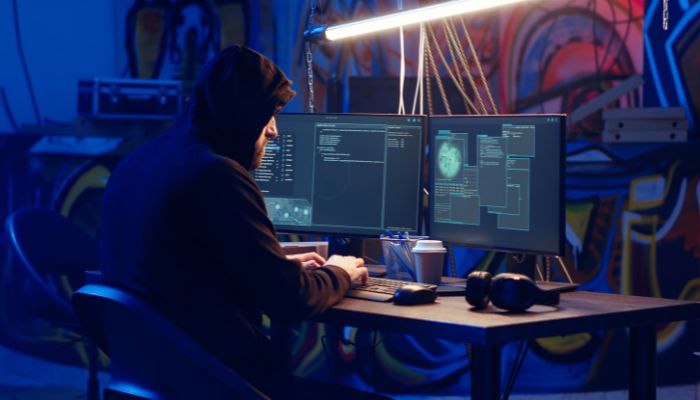More and more organizations are now reportedly suffering the effects of phishing attacks. As many organizations are still working remotely and the talk around ransomware and related things is increasing by the day, it has now become more imperative than ever for organizations to plan and organize cybersecurity training for their employees. Awareness is the key to identifying and dealing with phishing attacks. Phishing can cause a lot of trouble to individuals as well as organizations. And if people aren’t aware of what phishing is and how it is used to harm them and their employers, it is figuratively impossible to find ways to deal with it.
Phishing is a term that is used to define a number of cyberattacks. Having said that, phishing is a part of a broader category of cyber mischief that is referred to as social engineering. In simple terms, social engineering is nothing but making the most of the vulnerabilities associated with human nature. The ultimate objective is to manipulate an individual into taking an action that social engineers want them to. In phishing, a social engineer sends people fraudulent emails in which they are induced or lured into sharing valuable information that includes credit card details, passwords, and more.
With phishing, social engineers intend to dupe people by using fake emails that are made to appear that they have come from a big brand or a famous or rich personality. Phishing is also the most successful form of social engineering because it hits the most fundamental traits that are usually associated with human nature. Fear of missing out (FOMO), curiosity, and carelessness are a few of the traits that make it easy for social engineers to make people take the desired action. These scammers can catch your attention with the help of emails, social media messages, text messages, or even a phone call. They share a URL or a document that people are asked to open. And this is it, scammers are successful in stealing login information or hacking the system.
You might also be interested to read: 25 Top Technology Trends That Will Reign Over The Next Decade
There are companies that take a route to creating awareness about phishing and cybersecurity that isn’t advisable. They turn to scare tactics, which could cause annoyance and resentment amongst the members of the IT team. With these tactics, these companies can make employees so anxious that they would stop clicking on almost every link that comes to them through emails, social media, or text messages. This could make them miss out on clicking even the important links or opening important attachments.
Scaring people off won’t help in creating a culture of cybersecurity awareness. It won’t make employees understand anything about phishing attacks, what harm they can cause, and why they are being asked to be wary of these attacks. This is where the role of HR comes into the picture. It is their responsibility to create a culture that doesn’t put any blame on anyone and empowers everyone with education and tools that are required to deal with cybersecurity threats. This will allow every employee to contribute towards a common cybersecurity goal.
It is important for organizations to ensure that their cybersecurity training covers phishing attacks as well because most of the advanced cyberattacks are done using phishing. So, to tackle those and keep employees informed about the same, it is imperative that companies prioritize phishing in their cybersecurity training programs. This will help employees to not only identify phishing emails but also respond to them in the right manner. Cybersecurity training focussed on phishing attacks will help employees understand the common signs of identifying a phishing email. Some of these signs include embedded links, incorrect email address of the sender, grammatical or spelling mistakes, and more.
And it is not just about identifying phishing emails, a cybersecurity training program should also teach the participants about what they are supposed to do if they receive such an email. This training will teach them to never respond to emails in which they find something suspicious. What they are supposed to do in such a case is delete those emails without any delay and inform the IT department as soon as possible. Companies can also use phishing simulations to better prepare their employees for real phishing attacks. This practice involves sharing mock phishing emails with employees to make them better equipped to identify and respond to phishing attacks.
Providing employees with cybersecurity training is not enough. Companies need to also support these efforts by giving them necessary tools and devising processes to improve their defense against phishing attacks. What are employees supposed to do when they identify a phishing email? This is where creating a channel or email that employees can use to communicate their experience can be of immense help.
Also, companies need to have a password manager as well as a process for authentication at multiple levels to get their cybersecurity and digital hygiene in order. Cybersecurity has to do with both people as well as technology. So, companies shouldn’t only educate their employees but also give them tools that they actually need to deal with phishing. Organizations that follow this path make their employees’ lives a lot easier.
Here are a few things that can help employees to identify a phishing email or message:
- Most of the time, the subject line has a big enough cue. It would either spark an immediate need, scare the reader, or give them a very attractive offer.
- Check the email address and make sure that it has something in common with the name of the company or individual, whom the email has come from.
- A personalized email doesn’t make it any less a phishing attempt. Scammers often already have a few personal details of the person they are sending the email to.
- Grammatical and spelling mistakes are a big red flag. Scammers aren’t often too good with any language or they don’t think it’s important.
- Using available cybersecurity technologies can make a huge difference to a company’s cybersecurity efforts.
References:
- Create a Culture of Cybersecurity: Teach Employees to ‘Catch a Phish’ | Talent Culture | Ciara Lakhani | August 4, 2021
- How to Create a Culture of Cybersecurity at Your Company | Inc. | NEILL FEATHER
You might also be interested to read:






